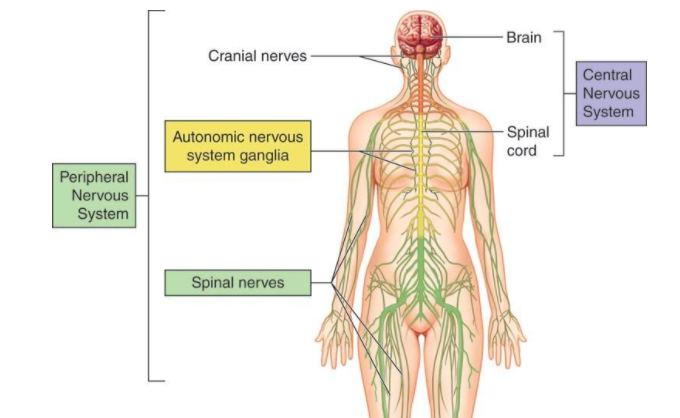
All are examples of cranial reflexes but not
A. Salivation
B. Scratching
C. Blushing
D. Sneezing
Answer
576.3k+ views
Hint: Cranial reflexes involve sensory and motor nerve fibres of cranial nerves that control vital and involuntary responses of the head region.
Complete answer: Nerves that emerge from the brain and brain stem and extend throughout the body are known as cranial nerves.
They help in carrying information from the brain to the head and some other parts of the body. They facilitate smell, vision, muscle movement, and hearing.
They control the involuntary actions of the head, neck, and other facial regions of the body. They arise from the brain and exit the foramina.
They form a part of the peripheral nervous system. Cranial reflexes such as salivation, sneezing, and blushing are all involuntary actions.
While scratching is a voluntary action and is controlled by the spinal nerves of the brain.
The schematic below shows the location of different types of nerves-

Additional information: A reflex is very fast, involuntary response to a stimulus.
A reflex arc is a passage traveled by the nerve impulses at the time of reflex.
Most reflexes are spinal reflexes with a passage that traverse only the spinal cord.
During a spinal reflex, information may be provided to the brain, but it is the spinal cord, not the brain, that is in charge of the integration of sensory information and a response transmitted to motor neurons.
Hence, the correct option is (B) Scratching.
Note: Most of the cranial nerves belong to the somatic system and are responsible for sensory and motor functions because they contain only sensory and motor fibres. Most of the cranial nerves contain both afferent and efferent fibres and are known as mixed nerves.
Complete answer: Nerves that emerge from the brain and brain stem and extend throughout the body are known as cranial nerves.
They help in carrying information from the brain to the head and some other parts of the body. They facilitate smell, vision, muscle movement, and hearing.
They control the involuntary actions of the head, neck, and other facial regions of the body. They arise from the brain and exit the foramina.
They form a part of the peripheral nervous system. Cranial reflexes such as salivation, sneezing, and blushing are all involuntary actions.
While scratching is a voluntary action and is controlled by the spinal nerves of the brain.
The schematic below shows the location of different types of nerves-

Additional information: A reflex is very fast, involuntary response to a stimulus.
A reflex arc is a passage traveled by the nerve impulses at the time of reflex.
Most reflexes are spinal reflexes with a passage that traverse only the spinal cord.
During a spinal reflex, information may be provided to the brain, but it is the spinal cord, not the brain, that is in charge of the integration of sensory information and a response transmitted to motor neurons.
Hence, the correct option is (B) Scratching.
Note: Most of the cranial nerves belong to the somatic system and are responsible for sensory and motor functions because they contain only sensory and motor fibres. Most of the cranial nerves contain both afferent and efferent fibres and are known as mixed nerves.
Recently Updated Pages
Why are manures considered better than fertilizers class 11 biology CBSE

Find the coordinates of the midpoint of the line segment class 11 maths CBSE

Distinguish between static friction limiting friction class 11 physics CBSE

The Chairman of the constituent Assembly was A Jawaharlal class 11 social science CBSE

The first National Commission on Labour NCL submitted class 11 social science CBSE

Number of all subshell of n + l 7 is A 4 B 5 C 6 D class 11 chemistry CBSE

Trending doubts
What is meant by exothermic and endothermic reactions class 11 chemistry CBSE

10 examples of friction in our daily life

One Metric ton is equal to kg A 10000 B 1000 C 100 class 11 physics CBSE

1 Quintal is equal to a 110 kg b 10 kg c 100kg d 1000 class 11 physics CBSE

Difference Between Prokaryotic Cells and Eukaryotic Cells

What are Quantum numbers Explain the quantum number class 11 chemistry CBSE




